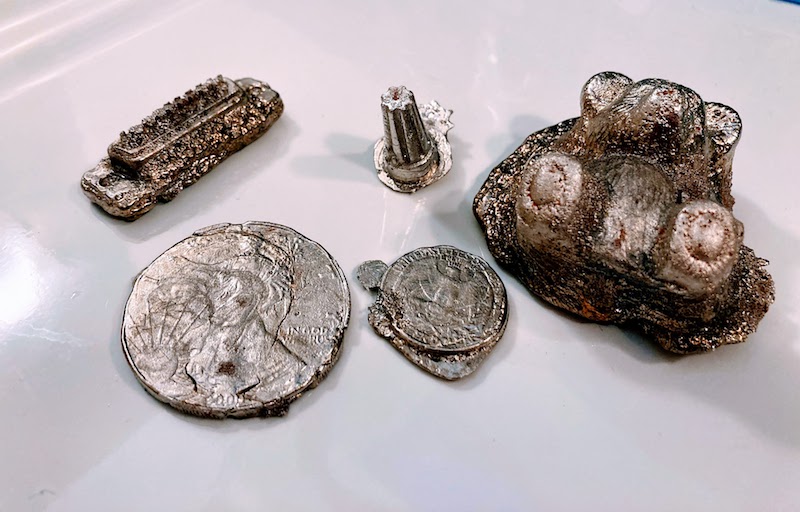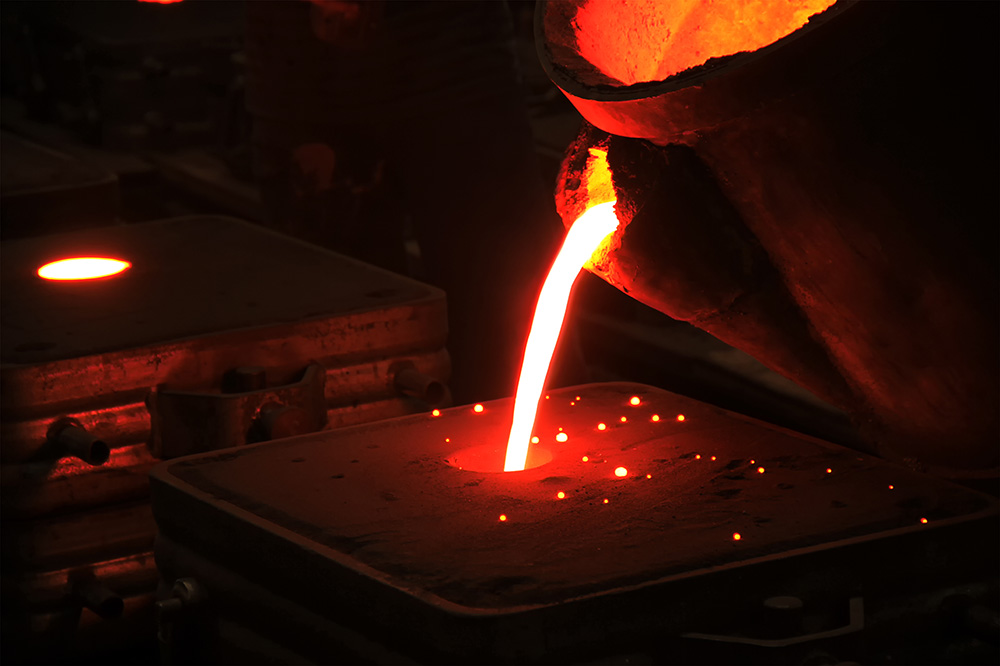Inside the world of Aluminum Foundry: cutting-edge casting solutions
Wiki Article
Understanding the Metal Castings Refine: A Comprehensive Overview for Beginners
The Metal Casting process is a fundamental strategy in making that changes molten steel into strong types. Novices should grasp the different approaches involved, such as sand spreading and pass away spreading. Comprehending the materials, layout principles, and safety actions is just as crucial. Each aspect plays an important role in attaining effective outcomes. As one browses these intricacies, the question of exactly how to enhance each step for enhanced results becomes significantly essential.The Fundamentals of Metal Casting
Metal Casting has actually progressed over centuries, its basic principles stay constant and important to the manufacturing process. At its core, Metal Casting includes the improvement of molten metal right into strong things with different strategies. The procedure starts with the creation of a mold, which defines the shape of the end product. As soon as the mold and mildew is prepared, steel is heated to its melting factor and put into the cavity. After cooling, the metal solidifies, taking the shape of the mold.There are numerous casting techniques, including sand spreading, investment casting, and pass away spreading, each with one-of-a-kind advantages and applications. The selection of strategy depends on elements such as production quantity, product kind, and wanted accuracy. Once cast, the last item may go through extra procedures like machining or surface treatment to achieve the needed coating and specifications. Recognizing these essentials is crucial for any individual thinking about the field of Metal Casting.

Recognizing Products Used in Steel Casting
Materials play a crucial role in the Metal Casting process, affecting the final item's homes and performance. Numerous steels are utilized, including light weight aluminum, iron, bronze, and steel, each offering distinctive features fit for specific applications. Aluminum is corrosion-resistant and light-weight, making it perfect for vehicle parts. Iron, particularly cast iron, is favored for its outstanding wear resistance and toughness. Steel offers high toughness and adaptability, often utilized in hefty machinery elements. Bronze, understood for its rust resistance and machinability, is typically used in aquatic applications.In enhancement to the steels, numerous casting materials, such as sand, plaster, and ceramic, are utilized to develop mold and mildews. Sand casting, the most widespread approach, uses silica sand because of its thermal stability and ability to develop complex forms. Plaster and ceramic molds offer better information however might require more intricate processes. The choice of materials straight influences the performance, price, and quality of the casting procedure.
The Style Process: From Concept to Plan
The layout procedure in Metal Casting begins with the initial principle development, where ideas are created and evaluated. This is followed by the application of CAD modeling strategies, enabling precise visualizations of the layout. Lastly, the blueprint completion steps guarantee that all specifications are properly documented for manufacturing.First Principle Advancement
Initial concept advancement marks an essential phase in the Metal Casting process, where concepts change into tangible layouts. During this phase, designers work together with stakeholders and designers to brainstorm and refine preliminary principles. They think about aspects such as performance, appearances, and manufacturability, making certain that the style satisfies the required requirements and performance standards. Sketches and harsh drafts are created to imagine the principles, enabling for initial assessments of expediency and cost-effectiveness. This phase likewise involves determining products and possible casting approaches that align with the design goals. Ultimately, initial principle development lays the foundation for a thorough plan, guiding the succeeding stages of the casting process and ensuring an effective shift from idea to reality.CAD Modeling Techniques
Changing principles right into accurate styles, CAD modeling strategies play a critical function in the Metal Casting process. These methods use advanced software to produce detailed three-dimensional models that precisely reflect the intended product. By employing tools such as parametric modeling, solid modeling, and surface area modeling, designers can control measurements and forms easily. CAD systems additionally assist in simulation and analysis, enabling the recognition of potential imperfections prior to production starts. This proactive strategy minimizes material waste and maximizes the design for manufacturability. In addition, CAD designs can be easily customized, making it possible for fast models based upon feedback. Fundamentally, CAD modeling works as the foundation of the layout procedure, linking the gap between first principles and the eventual production-ready designs.Blueprint Finalization Steps
Complying with the development of comprehensive CAD models, the following stage entails blueprint finalization, which is crucial in equating digital designs right into actionable prepare for manufacturing. This procedure begins with reviewing the CAD versions for accuracy and conformity with requirements. Once verified, the dimensions, resistances, and material requirements are diligently detailed to assure clearness. Integrating annotations and notes aids interact vital information relating to spreading processes, surface area coatings, and assembly requirements. The finalized plan undertakes a strenuous authorization process, usually including collaboration with engineers and manufacturing teams to attend to any kind of prospective issues. Besides alterations are made and authorizations acquired, the blueprint is officially launched, acting as the foundational file for the subsequent stages of Metal Casting, consisting of pattern production and mold style.The Steel Casting Techniques Clarified

Metal Casting strategies incorporate a range of approaches made use of to form liquified metal right into preferred types. These methods vary according to the sort of product, intricacy of the style, and manufacturing volume. Sand spreading is among one of the most usual techniques, involving the creation of a mold and mildew from sand to hold the molten steel. Investment spreading, or lost-wax casting, enables elaborate styles by utilizing a wax pattern that is thawed away. Die casting utilizes high-pressure injection of liquified metal right into a mold, appropriate for automation. Other techniques consist of long-term mold spreading, which makes use of multiple-use mold and mildews, and centrifugal spreading, where rotational pressures assist in loading the mold. Each strategy has its advantages and applications, making it vital for manufacturers to pick the proper technique based upon their particular demands and needs. Understanding these methods is necessary for anybody associated with the Metal Casting process.
Completing Procedures: Enhancing Your Casted Item

Ending up processes play an important role in boosting the top quality and appearance of casted items. Numerous surface treatment techniques, such as polishing and coating, are used to improve resilience and aesthetics. In addition, top quality evaluation methods assure that the final item meets defined criteria and look here efficiency demands.
Surface Treatment Techniques
A range of surface area therapy techniques play an essential function in boosting the quality and long life of casted items. These methods include approaches such as shot blasting, brightening, and layer. Shot blowing up effectively eliminates surface area blemishes, improving the useful and aesthetic characteristics of the casting. Polishing gives a smooth surface, which is particularly essential for decorative applications and elements needing minimal friction. Coating methods, such as electroplating or powder finish, deal additional protection against rust and wear, making certain toughness. Surface area treatments can improve adhesion for succeeding procedures, such as paint or bonding. By utilizing these methods, manufacturers can attain superior surface high quality, which is critical for the performance and lifespan of Metal Casting in numerous applications.Top Quality Examination Approaches
Reliable high quality assessment methods are necessary for guaranteeing the stability and efficiency of casted items after the ending up processes. Different strategies are used to analyze the top quality of Metal Casting, consisting of visual evaluation, dimensional checks, and non-destructive screening (NDT) Visual inspection enables the recognition of surface area problems, while dimensional checks ensure that products meet defined resistances. NDT techniques, such as ultrasonic testing and radiographic inspection, provide much deeper understandings into inner stability without damaging the castings. In addition, mechanical testing, such as tensile and firmness examinations, examines product properties - Wisconsin Aluminum Foundry. By using a combination of these approaches, makers can enhance item quality and dependability, ultimately causing better consumer contentment and reduced production expensesSafety Considerations in Metal Casting
While the Metal Casting procedure provides various benefits, it additionally presents an array of safety threats that have to be carefully managed. Employees in casting facilities are revealed to heats, molten metals, and unsafe products, which can lead to severe injuries if proper safety measures are not taken. Individual safety equipment (PPE) such as heat-resistant handwear covers, encounter shields, and protective clothing is vital to minimize threats.Furthermore, the visibility of fumes and dust demands correct air flow systems to ensure air top quality - Aluminum Castings. Normal training on safety and security methods is vital my site for all employees to recognize possible risks and respond effectively. Emergency procedures need to be established, including fire security steps and emergency treatment availability. Maintenance of devices and correct handling of materials better contribute to a safer working atmosphere. By focusing on these safety and security factors to consider, Metal Casting operations can safeguard their workforce and preserve effective production procedures
Frequently Asked Concerns
What Are the Environmental Impacts of Metal Casting?
Metal Casting can bring about environmental effects such as air and water air pollution, source exhaustion, and energy intake. Additionally, incorrect waste monitoring and discharges from foundries add to ecological disruptions and health dangers for nearby neighborhoods.Just how Do I Pick the Right Steel for Casting?
To pick the best metal for spreading, one have to consider aspects such as mechanical properties, corrosion resistance, thermal conductivity, and cost. Assessing the desired application and ecological conditions is vital for try this web-site ideal choice.What Are the Common Flaws in Metal Casting?
Common flaws in Metal Casting consist of porosity, shrinking, sand addition, and misruns. These issues frequently emerge from incorrect material choice, inadequate design, or imperfections in the spreading process, impacting the end product's top quality and performance.
How Can I Improve My Steel Casting Abilities?
To improve Metal Casting skills, one need to exercise constantly, research study casting methods, assess previous jobs for flaws, seek feedback from experienced casters, and continually try out various materials and methods to boost effectiveness and understanding.What Is the Expense of Beginning a Metal Casting Company?
Starting a steel spreading organization typically calls for a preliminary investment of $5,000 to $50,000, depending upon devices, products, and facility expenses. Factors like location and range can greatly influence general startup expenses.The Metal Casting process is a fundamental method in making that transforms molten steel right into strong types. Beginners have to grasp the numerous techniques included, such as sand spreading and die casting. There are several casting techniques, consisting of sand casting, investment spreading, and die spreading, each with special advantages and applications. Investment casting, or lost-wax casting, enables for intricate styles by using a wax pattern that is thawed away. Various other methods include permanent mold and mildew spreading, which makes use of recyclable mold and mildews, and centrifugal spreading, where rotational pressures help in filling up the mold and mildew.
Report this wiki page